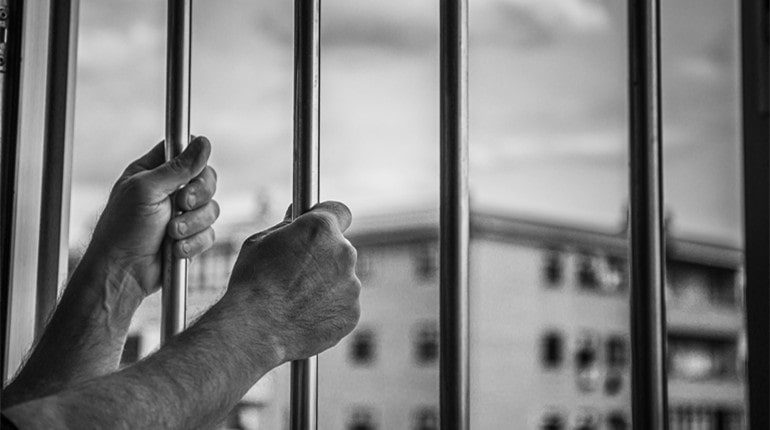Did you know that there is an option for federal inmates to serve their time at home instead of in a prison? It’s called home confinement, and it’s becoming more and more popular. In this blog post, we will discuss the basics of home confinement for federal prisoners.
We will answer some of the most common questions about the program, such as how it works, who is eligible, and what benefits it offers. If you are considering this option for your loved one, or if you are just curious about it, read on!
What Is Considered Home Confinement?
Home confinement is a program that allows federal inmates to serve their time in the comfort of their own homes. In order to qualify for this program, an inmate must meet a number of requirements, including but not limited to being a low-risk offender, having a stable residence, and having no prior convictions for escape or violence. The program is available to both pre-trial and post-conviction inmates.
Federal home confinement has been around for many years, but it became much more popular in the wake of Covid-19. With prisons becoming overcrowded and dangerous due to the pandemic, more and more people are opting for home confinement instead. The Federal Bureau of Prisons has recently released updated guidelines for home confinement in the Covid-19 era.
Home Confinement And House Arrest
Home confinement, also known as house arrest, is a type of detention that restricts an individual’s movement to their home. This can be for either a criminal or immigration-related matter. In the U.S., there are two types of home confinement: federal and state.
Federal home confinement applies to inmates who are serving time in federal prison. There are specific requirements that must be met in order to qualify for this type of detention. The first is that the inmate must have less than 12 months remaining on their sentence.
They must also meet certain health criteria, such as being free from communicable diseases and not posing a danger to others. Finally, they must have a stable residence where they will be confined during their term of home confinement, and they also can proceed through CARES Act home confinement.
Federal home confinement was first introduced in 1992 as a way to reduce the number of inmates in federal prison. It has been used extensively in recent years due to the pandemic of Covid-19. Inmates who are considered for home confinement are typically those who do not pose a threat to the public and do not require intensive medical care.
Home confinement, whether federal or state, is considered a privilege and not a right. Inmates can be denied this type of detention for any number of reasons, including violating.
Who Is Eligible For Home Confinement?
As we mentioned in the previous paragraph, in order to be eligible for home confinement, an inmate must meet a number of requirements, including but not limited to being a low-risk offender, having a stable residence, and having no prior convictions for escape or violence. The program is available to both pre-trial and post-conviction inmates.
What Benefits Home Confinement Offers
There are many benefits to home confinement for federal prisoners. First and foremost, it allows inmates to remain in their own homes, which can be very comforting during a difficult time. It also eliminates the need for transportation to and from prison, which can be dangerous given the current state of affairs.
In addition, home confinement can be considerably cheaper than prison, and it allows inmates to continue working or attending school.
Federal Home Confinement Before Covid-19
This program can be used as an alternative to prison, and it has been in use for many years. There are a few things you should know about federal home confinement before Covid-19.
Eligibility for Home Confinement: Generally, only low-risk offenders are eligible for home confinement. In some cases, however, high-risk offenders may be allowed to participate in the program if they meet certain requirements. For example, they may be required to wear an electronic monitoring device or comply with other conditions of release.
Federal Home Confinement In The Covid-19 Era
The pandemic of Covid-19 has led to a number of changes in the way our government is handling incarceration. One such change is an increase in the use of home confinement for federal prison inmates. In this article, we will discuss what is considered home confinement, who is eligible for it, and how it has changed in light of Covid-19.
The Duration Of The Home Confinement
The duration of home confinement will vary depending on the inmate’s offense and criminal history. In general, however, most inmates will be released from home confinement after completing three-quarters of their sentence.
For example, an inmate sentenced to one year in prison might serve nine months of that sentence in home confinement. There are a few exceptions to this rule, such as inmates serving time for certain drug offenses or sex crimes.
Inmates who are considered low-risk may be eligible for early release from home confinement. The Bureau of Prisons makes this determination by assessing the inmate’s risk level, which is based on factors such as age, criminal history, and community ties. Low-risk inmates typically have no history of violence, no prior convictions for serious crimes, and strong community ties.
The terms of their release or displaying disruptive behavior. It is important to note that home confinement does not reduce the amount of time an inmate spends in prison. Rather, it allows them to serve the remainder of their sentence in the comfort of their own home.
What Is The Purpose Of Home Confinement?
The purpose of residential confinement is to assist US Probation and Pretrial Services personnel in supervising or monitoring individuals throughout the criminal justice process, including before trial and after conviction.
In the case of pre-trial imprisonment, it is an option to keep the public safe outside of prison. Home confinement is a form of house arrest that is used to guarantee community safety in post-conviction situations. It’s a lesser punishment than prison but more severe than normal supervision.
The use of house arrest as a penalty for people who violate their supervision conditions is common in both federal and state courts.
In federal cases, there are a few different options for house confinement. Federal courts may order individuals confined to their homes or jurisdictions with restrictions on travel and communication, as well as monitoring. The following are just some examples of what might be considered “house arrest”.
- People are generally free to go outside their homes during curfews, which are limited by curfew rules.
- People on house arrest must be at home at all times, with the exception of pre-approved excursions for employment, school, treatment, church, legal appointments, court appearances, and other court-ordered duties.
- House arrest (also known as house imprisonment or home confinement) entails being under house arrest 24 hours a day, seven days a week, with the exception of medical appointments, court hearings, and other activities authorized by the Court.
Another goal of house confinement or home detention is to assist law enforcement and corrections agencies across the country in reducing jail and prison overcrowding.
Home confinement benefits the courts since it is much less expensive than jail time. Furthermore, people on house arrest are frequently required to pay for their monitoring expenses. Finally, because individuals may help their families and pay taxes while under house arrest, it serves as a good deterrent.



